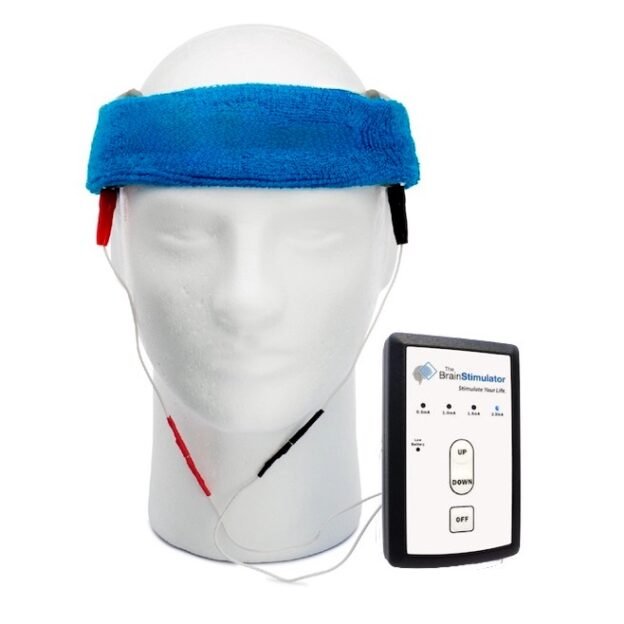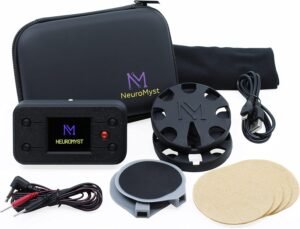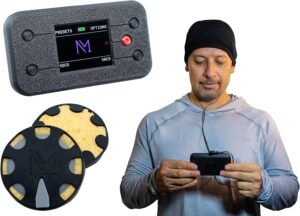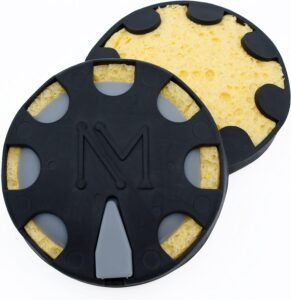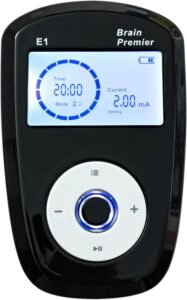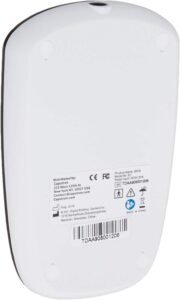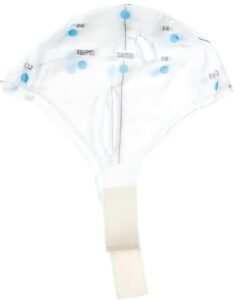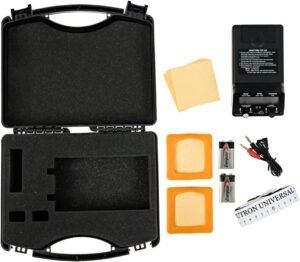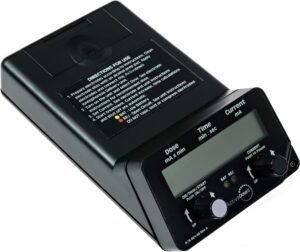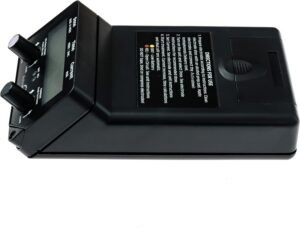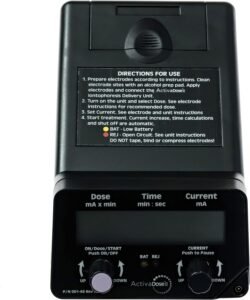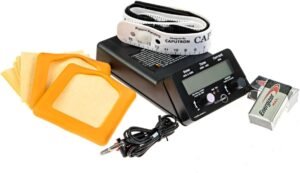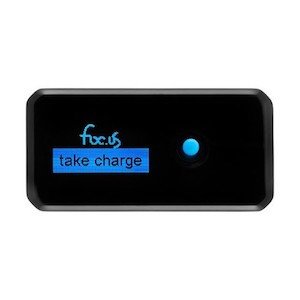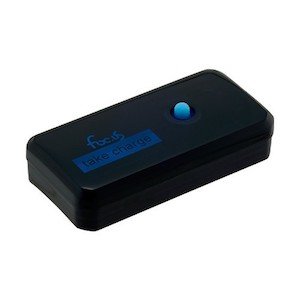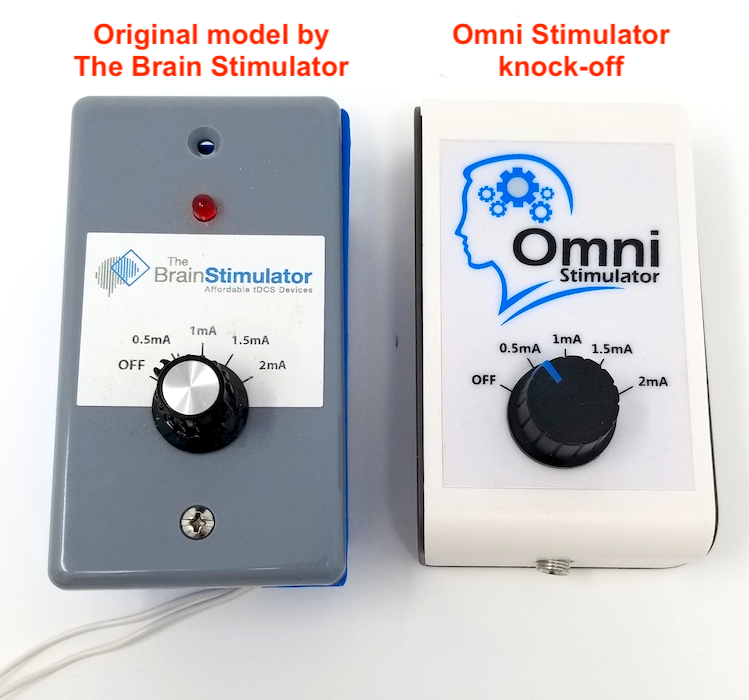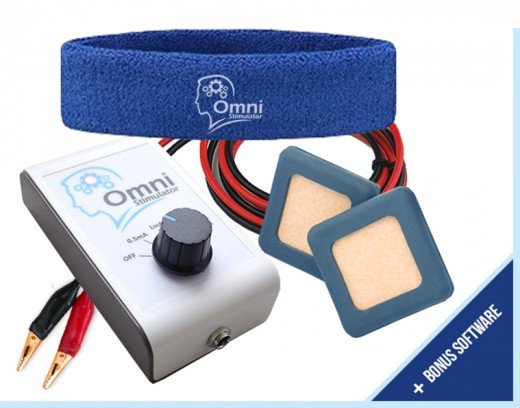With so many available options, how do you choose the right one? How can you make sure you’re getting a safe, good quality device? What should you look for and what should you stay away from? We’re here to answer your questions
Below is our list of the top 5 recommended tDCS devices. In total we’ve collected, inspected, and strapped on close to two-dozen tDCS devices. Only a select few made it to this cherry picked list. Our recommendations are not based strictly on functionality and feature set, but also on manufacturing quality and product safety.
Top 5 Best tDCS Devices
NeuroMyst was started in 2021 by a science engineer passionate about making brain stimulation technology safe and accessible for home-based use. The company’s goal for their initial product (The NeuroMyst Pro) was to build a consumer tDCS device that offered all of the safety and feature capabilities of most scientific grade tDCS devices at an affordable price. Along with tDCS, the NeuroMyst Pro also features tACS. This is not a technology we typically recommend due to it’s lack of research and mediocre results when compared to tDCS. However, the ability to experiment with tACS is a neat additional feature.
The NeuroMyst Pro may seem somewhat bulky, but it packs a lot of features. Current level can be adjusted from 0.1mA to 4mA in 0.1mA increments (FYI, we dont recommend exceeding 2mA). You can also adjust your session time from 1-60min. In addition, the device festures an electrode connectivity gauge to show you if the electrodes need to be adjusted for a better sesssion. The device features a variable voltage output that adjusts to the need of the particular montage you’re using. While the device is powered from a Li-ion battery (not our top choice), this does allow for easy recharging when the device’s battery gets low. Special voltage boosting technology ensures the device performs at the same quality during each and every session.
What We Like:
- User defined session length timer
- Sessions can be set at current increments of 0.1mA
- Visual indicator of position resistance alerting the user if the sponges need to be re-wetted/re-positioned.
- Device will power off if external resistance is too high (i.e. sponges are not attached correctly).
- Numerous redundant levels of safety features built in.
What We Dislike:
- Pretty bulky device – You’re basically stuck at your desk while using it.
- Can be a little difficult to control (please refer to instructions).
- Not possible to change output current during a session – must first end the session and setup a new session.
- High voltage output (≥40Vdc). Required for some montages listed on their website, but otherwise far higher than our maximum recommendation.
The Brain Premier is an affordable tDCS device produced by Caputron Inc., a long standing reputable company. This is their first forte into the consumer grade tDCS device industry, and they’ve done a great job doing so. The device checks off a lot of our tDCS device requirements including current ramping, a maximum level of 2mA, and session time limits.
It performs similarly to The Brain Stimulator and we’ve been using their products for many years. Caputron is currently the largest company in the neurostimulation field and feature reputable board members and ventures into scientific product research. While we’ve found no published studies on The Brain Premier, we have a lot of confidence in their product design.
What We Like:
- Built by one of the largest companies in the tDCS industry.
- Affordable yet includes minimum standards for features and safety.
- Complete kit comes packaged with a head cap that assists in accurate electrode placement.
- Easy to read screen for adjusting stimulation parameters.
What We Dislike:
- Powered by a lithium-ion battery. Li-ion batteries vary in power production over time. We would much prefer to see a standard Alkaline powered device.
- High voltage output (26V).
- Voltage from rechargeable Li-ion batteries can be difficult to control posing potential safety concerns.
The Activadose is our #1 recommendation on this list for professionals and medical practitioners. It’s also a top notch device for individual users and a lot of medical professionals interested in tDCS choose the Activadose to provide their patients for at home tDCS therapy. The Activadose is one of the oldest professional tDCS devices available, and for many years it was only available commercially. The newly available Caputron Starter Kit now offers consumers a complete package with everything needed to get started with tDCS.
This recommendation EXCLUDES 4mA+ models. We DO NOT recommend exceeding 2mA current levels during stimulation sessions.
While Focus’ first product had some notable safety issues, their second and third generation product seems really rock solid. The visual interface and incremental session & ramping timers are totally awesome. With this device, you pretty much get it all. It can even produce stimulation sessions utilizing tACS, tRNS, and a few others. However, those options are part of why Focus didn’t rank higher on our list. Well… that and price (currently 400 USD!).
Many of the included “alternative” stimulation methods are backed by very little scientific research, and while it’s neat that Focus allows the user the ability to explore these brain stimulation alternatives, there exists a level of safety concern due to lack of research. We are tDCS guys, and we firmly believe in tDCS’s strong scientific backing, and superior performance above other alternative stimulation methods. But all in all, this is not a device we would dissuade people from looking into.
What We Like:
- Also been around since the beginning – actually may have been the first commercially available tDCS Device.
- Very feature packed device – practically as robust as the TCT device, but packed into a product the size of a Bic lighter.
- While hard to find, their website contains a wealth of technical information about their products.
- Great safety features (triple redundant), see here (doc upload).
- SUPER compact device, you can take this thing anywhere.
What We Dislike:
- Products are way overpriced – The Focus v2 & v3 Stimulator are currently $400 while their significantly lesser and not recommended Go Flow v4 is $244.
- Users claim terrible customer support – some never receiving responses.
- To be brutally honest, the founder (co-founder?) Mike is a real d**k – just checkout some of his reddit posts (most of which have since been deleted).
- Focus’ “Go Flow” products are unnecessarily small, about the size of a quarter, very confusing and hard to use.
- Their latest product (Go Flow v4) can produce current levels reaching up to 4mA, which is incredibly unsafe and totally unacceptable. 2mA is the widely accepted max safe current level.
- In 2016 a scientific study entitled “Unfocus” on foc.us: commercial tDCS headset impairs working memory. found the Focus stimulator actually produced opposite effects from that which it was marketed to produce.
Omni Stimulator(kind of)
We struggle with this recommendation, however if your purse strings are stretched super tight, go with the Omni Stimulator. It’s a direct rip-off of the original “The Brain Stimulator”, which was a solid device (see ABC Nightline Video). We’ve heard from many individuals who are still using their original Brain Stimulators years later, and since the circuits look “ok” (Chinese assembly), this may be a good buy. Oh, but be wary of Omni’s customer reviews and sales tactics. Their “cash back” offer is merely a 5-star review solicitation, and the “free included software” is junk freely available over the internet.
IMPORTANT NOTE: The Omni device is only sold with “alligator clip” cables, which can cause burns/lesions if they touch skin. This antiquated cable connector was abandoned years ago in favor of the “banana plug” which provides a fully shielded connection. In addition, banana plugs are compatible with nearly every sponge electrode brand on the market. So if you pick up the Omni Stimulator just know you won’t have the luxury of swapping out electrodes
NOTE: This is a completely unbiased list, and we are very proud of that. That being said, we may earn a small commission from purchases you make using links on this site. This does not change your experience at all. These commissions help us continue to run Total tDCS as a community project without interfering with the quality information we provide you.

